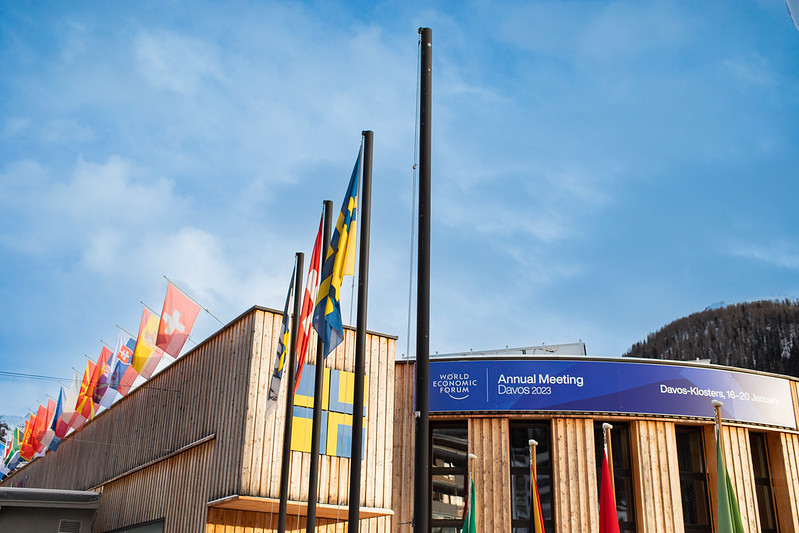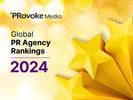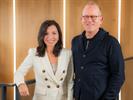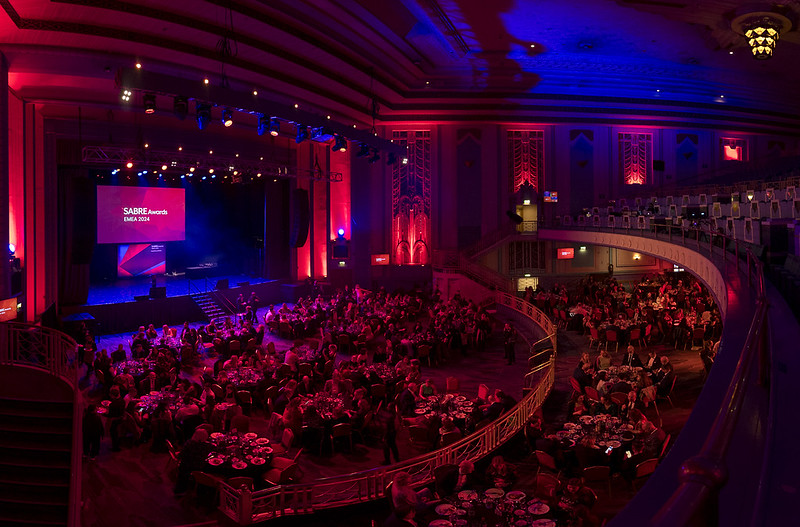Paul Holmes 04 Feb 2018 // 6:44PM GMT
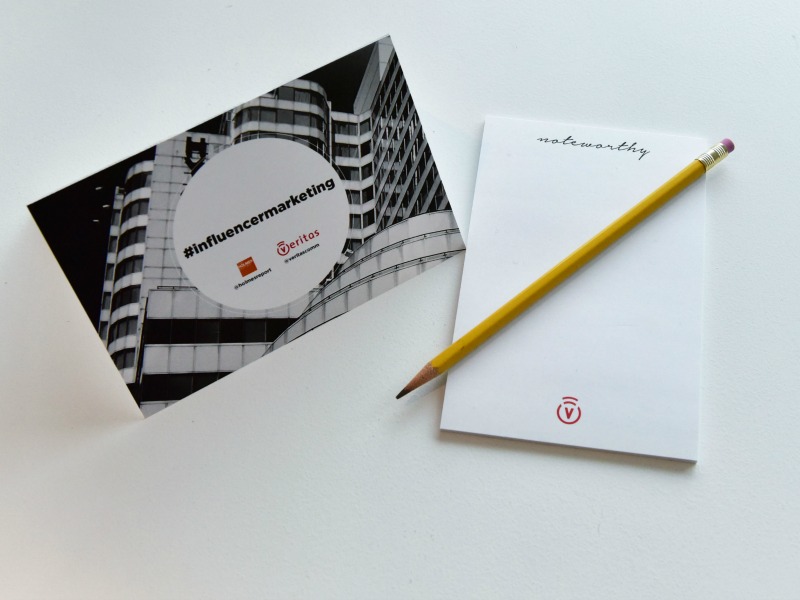
TORONTO—Public relations, and PR agencies in particular, have a unique role to play in influencer marketing, despite interdisciplinary competition with advertising agencies and agents who represent a roster of major influencers. Public relations can offer greater authenticity and credibility, more organic storytelling, co-creation of content, and stronger, more sustainable influencer relationships, and approaches to measurement that go beyond reach.
That was the major conclusion of a roundtable discussion in Toronto, sponsored by leading Canadian PR and influencer marketing agency Veritas and featuring Canadian marketing and communications executives from several leading companies, who discussed their own—sometimes quite different— approaches to influencer marketing.
One of the first questions involved internal “ownership” of the discipline. So while some companies—including General Mills Canada and Labatt Breweries—saw ownership of influencer marketing residing with the marketing department, others saw it as a shared responsibility.
“I think part of the challenge is the question of who funds it,” says Lisa Gibson, a communications executive with Microsoft in Canada. “On one hand PR takes care of most of the influencers, because we nurture the relationship and we’re always on, we’re always focused on it, But there are some conflicts sometimes when someone in marketing is the one who’s actually funding it, and we have a difference of opinion about which influencers to partner with and how we want to leverage them.”
That question of funding can, in itself, be a tricky one, because many companies have both paid and unpaid components to their influencer strategy.
A Question of Ownership
“The influencer landscape for us is such that there are some influencers who are compensated and paid,” says David Bradfield, vice president of communications for Sonnet Insurance Company. “Typically if it’s paid and the output is guaranteed, that tends to fall more to the marketing side of the fence.
“But we also have a stable flow of influencers who are very much story-tellers, and it is rooted in our ability to maintain and sustain those relationships. Those individuals tend to align more with the communication function, because the marketing programs work in such a way that you’re on and you’re off whereas from a PR perspective we’re always on and we’re always maintaining those relationships.”
Veritas president and CEO Krista Webster works with both marketing and communications clients and sees a critical role for both.
“It should be a collaboration,” she said. “Confluence is the new influence. Bringing together events, digital creative, earned PR and paid media to inspire sharable content with and for influencers—to influence consumers—is our number one mission at Veritas. Agencies need seasoned media planners, digital strategists, and creatives on their team to truly break through.
Not surprisingly, though “when it comes down to ownership of influencer strategy and management, PR agencies who can reimagine themselves, are best suited to the task,” Webster believes.
The discussion also touched on the ways in which influencer marketing can expand beyond the digital and social realm—which has clearly fueled much of its recent growth—into the real world.
AB InBev, said Allen, is doing a lot of real-world activity, particularly with high-end brands like Stella Artois. “Stella Artois for example is all about hosting, bringing art, food, music together. So we host events with celebrity designers, celebrity chefs. And it needs to be scalable. So, if you have a big tier one event, are you then scaling that at your restaurant accounts taking it to the trade, to retail, to ecommerce with partnerships with like chef’s plate and all that.”
Sonnet, says Bradfield, does sports sponsorship that includes an influencer component. “We’ll ring people out to events, and we have had instances where we may be hosting somebody and people who follow them or watch them will see them there.”
Paid Influence or Earned Influence?
One divide between marketers and communicators has been the decision between paid endorsements—which offer a high degree of control—and earned influence, which can deliver greater credibility.
“For us, that is the great divide between the marketers and the comms people and we try to find the middle ground where we both can co-exist in a friendly manner, though it doesn’t always work,” said Jane Shaw, vice president of corporate communications for Canadian Tire. “I think the big thing we are constantly trying to remind our marketing partners of is the authenticity of it, and consumers are really smart and they get what a paid influencer strategy looks like, versus more of an authentic storytelling type of coverage.
“Releasing a bit of control of the brand I think is a big thing that we struggle with our marketers.”
Building Influencer Relationships
The question of one-off deals or relationship-based programming likewise drew some mixed reactions.
Many participants sought to strike a balance.
“I think it’s both,” said Leslie Mackay, director of brand marketing, sales strategy & shopper marketing at Kimberly-Clark. “I think it really depends on what your objective is and what you’re trying to achieve. So in the healthcare space, you’re probably going to have, and want, a longer term relationship with someone who’s highly regarded in the field. However, if you’re launching something that might be a sub-brand of something else and it’s very targeted—like a fitness item—you might find someone who is special in that field and use it for the campaign and move on to your next thing, so it depends.”
Others felt there was an advantage in building long-term relationships, particularly if with “authentic” fans.
Said Stephanie Nadalin, manager of external communications with Canadian Tire: “One of the things that we have started doing is looking at the people who organically just tag us in things, so they’ve gone to Canadian tire, they’ve shopped there, they’ve tagged us. We haven’t solicited them, they haven’t solicited us, so it’s really just been that they love our brand, and then from there in some cases it turns out to be a long-term relationship that just builds on its own.”
Similarly, Aleksandra Stratton, senior marketing manager at Whirlpool, recalled working with chefs who were part of the Food Network, many of whom worked with multiple partners and were starting to feel “less authentic.” As a result, “we kind of backed away from that, and went into the social stuff, and it’s interesting because we are always trying to get the right balance of who to partner with at what point. We went very grassroots and found individual interior designers and started working with them and really creating long-term relationship with them.”
Co-creating with influencers is the best way to achieve incredible results, Webster says. Several years ago, Veritas reimagined its internal structure years ago to ensure digital, video, photography, lifestyle creatives were brought in-house so that the agency was capable of creating “highly experiential social content.” A thorough and collaborative briefing process provides the brand and campaign background in advance of content creation. Webster said.
Several participants expressed concern about working with “big name” influencers. They can deliver greater reach, obviously, but usually at greater expense. And there’s an increased risk that the brand message will get lost amid a flurry of other endorsements, or that the audience will become cynical about obviously paid mentions.
Stratton, for one, expressed concern that “creative agencies want those big influencers to be part of the big campaign. Usually it’s the PR agency, the people that work there, who are really good at creating the relationship with the influencers, and I would say the creative agencies are not really used to that.”
Microsoft’s Gibson had her own strong viewpoint: “I think there’s a bit of fatigue around the large, very expensive influencers, but I think what happens internally is some of the business partners they want to see quick KPIs, so they don’t take the time to really analyze whether or not this is really working. You can get pressured into showing the quick hit with this huge following even though you know in your heart it’s probably not the right thing because it isn’t the best fit. I still think there is a bit of education with larger business executives to walk them through why that quick hit isn’t always the right answer.”
Emma Eriksson, vice president of marketing for General Mills Canada, saw benefits to a balanced portfolio of influencers: “I think that it’s important that it is a blend because I think that the reality is that while the highly paid influencers do have some reach, people more and more see them quite frequently and start to question their authenticity.
“What the PR side does, when you identify up-and-comers, is they start at the ground and build up the relationships so when those influencers do start to have a higher audience reach, they’re already a fan of yours. I think the best campaigns we’ve had is when several agencies have worked together. You can take a piece of content that comes from one agency or another, and it becomes this thread that runs through all your communication, and I think that’s where it really works and you really get that impact.”
“Large influencer campaigns that are so obviously paid I think those are going to go away,” said Agatha Wronecka, brand communications executive at Canadian Tire, “and I think it’s the authentic relationship-based influencers that will continue to be successful.”
Webster says that Identifying the right influencers for a brand is crucial in crafting effective influencer marketing strategy to meet the brand objective. Veritas has developed a proprietary process and scoring model for influencer selection to ensure the right influencers are selected at the outset.
“Audience reach is important depending on the objective of the campaign, but should not be the only factor considered. Reach, relevance and resonance are considered in combination, alongside several other factors: quality of content, engagement rates, authentic connection to the brand, relevant channels, aesthetic, and more.”
The Agency Role
Regardless of their perspective of any of those issues, almost all participants acknowledged a major role for agencies in the influencer marketing realm.
“For me it needs to be a bit of a hybrid,” said Todd Allen, vice president of marketing for Anheuser-Busch InBev in Canada. “The brand has to have the relationship with the influencers in order for it to be authentic, so we make sure that we have a face whether it’s our brand manager or our director who is actually building the personal one-to-one relationships. But on the back end of it, if you’re not staffed appropriately to manage all the details, that joint relationship between the agency and brand allows you to do all that together.”
For a lot of companies, though, it comes down to resourcing. Said Michael Hurt, director of marketing and sales strategy at Kimberly-Clark: “We don’t have the resources and bandwidth to do that kind of stuff internally in terms of knowing who’s influential, so we look to our agencies to bring that forward. We are more interested in the how than the what.”
Another trend sees influencer marketing expanding beyond brand promotion to include a corporate reputation component—and in particular, a focus on social responsibility.
“I think it’s absolutely critical,” said Allen. “You talk about building purpose for a brand, you need to have, you need to make people’s lives better every day.”
Michael Hurt, director of marketing and sales strategy at Kimberly-Clark, says the Huggies brand has been investing for the past four years in understanding the science of hugs, and evidence that skin-to-skin contact can slow heart rate and improve breathing. The company’s “No Baby Unhugged” initiative encourage skin-to-skin contact for babies with both moms and dads.
“That’s actually where we get the most of our engagement in terms of our influencer perspective, engaging around the hug,” Hurt said. “Generally, our influencer has a baby, they get that first skin-to-skin hug they take pictures because that’s what everybody does when they first have a baby, and that’s where we get the engagement.”
New Metrics For Influencers
A final topic, inevitably, was measurement. Like many marketing disciplines, old and new, influencer marketing still struggles with standardized measurement—with most execs acknowledging that reach alone does not prove effectiveness.
Said Allen: “To be honest I think we’re archaic in how we measure it. The traditional media/PR standpoint is number of stories, and impressions I get laughed out of the room when I get up there with my 15 billion impressions. And then on the social side, we can measure share of conversation, social impressions, but what I have yet to figure out is the true ROI and the true ROE on it, I believe in it, I know it’s the right thing to do, but it’s very difficult for me to prove.”
Therese Brisson, senior marketing leader and sport visionary for Kimberly-Clark, said the best measurement approaches she had seen involved marketing mix modeling, and attribution models “not just for the why but for the effectiveness because they translate into sales. PR has always been one of my best investments and so that’s under a long history of different brands and companies.”
David Bradfield however, leans more towards the quality of engagements to measure success. “From an input perspective we have a reputational index. One of the values of influencer marketing and social listening is our ability to deliver contextual insight to the organization, and you can’t really put a number on it but it allows us to be more relevant, more reactive, more responsive in good and bad moments.”
Along the lines of Bradfield’s thinking, I made the case for Net Promoter Score, which appeared to resonate. All PR campaigns can be about creating more fans, more advocates and reducing the number of detractors. Many marketers like to measure PR alongside other marketing activities as a way to compare ROI, but that leads to an emphasis on reach-based metrics, including AVE, that fall short of demonstrating genuine impact. Reach is not awareness—and it certainly doesn’t mean increased advocacy.
The measurement conundrum will need a solution if influencer marketing is to continue its recent dramatic growth, but participants were almost universally positive about the discipline’s future. Webster, for one, believes that influencer marketing will become more refined, more relevant, and more effective.
“When it comes to measurement, incorporating Net Promoter into a more complex Impact Score as we do, will help marketers understand the effectiveness of influencer marketing. Brands should have benchmarks that allow them to make informed decisions and allow them to optimize and amplify the right influencer content, like how media optimizes ad performance.
“We have seen influencer content consistently outperform ad content when A/B tested. There isn’t a magic bullet tool that will spit out a number for you to help you assess influencer marketing. Marketers need to consider a combination of elements in relation to their campaign objective, including Impact Score, qualified engagements, and custom campaign indicators like acquisition, purchase intent or referrals.”
Attendees:
• Agatha Wronecka, AVP, Brand Communications, Canadian Tire
• Aleksandra Stratton, Senior Marketing Manager, Whirlpool Corporation
• Cristina Wells, Senior Marketing Director, Subway
• David Bradfield, Vice President, Communications, Sonnet Insurance Company
• Emma Eriksson, Vice President Marketing, General Mills Canada
• Jane Shaw, Vice President, Corporate Communications, Canadian Tire Corporation
• Kelly McInenly, Associate Vice President, Brand Management – Style and Home, Canadian Tire Corporation
• Leslie Mackay, Director of Brand Marketing, Sales Strategy & Shopper Marketing, Kimberly-Clark
• Lisa Gibson, Communications Executive, Microsoft
• Michael Hurt, Director, Marketing and Sales Strategy, Kimberly-Clark
• Stephanie Nadalin, Manager, External Communications, Canadian Tire Corporation
• Therese Brisson, Senior Marketing Leader and Sport Visionary, Kimberly-Clark
• Todd Allen, Vice President Marketing – Canada, Anheuser-Busch InBev









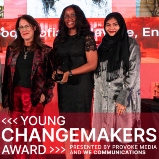












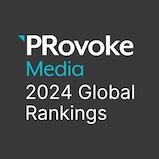












.jpg)












